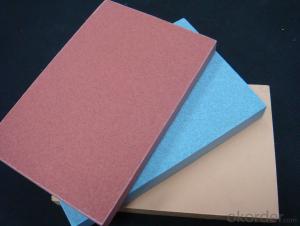When we talk about suspended ceiling grid systems, its like discussing the skeleton of a room. Its not always the first thing you notice, but its crucial for the overall structure and function. Lets dive into the world of suspended ceilings and explore the essential components that make them work so well.
The Mainframe: The Backbone of the Ceiling
The mainframe, also known as the grid, is the core structure of a suspended ceiling. Its like the spine that holds everything together. Made from materials like aluminum or steel, the mainframe provides the necessary support for the ceiling tiles. Its designed to be lightweight yet strong, ensuring durability and stability. The mainframe comes in various shapes and sizes, allowing for flexibility in design and installation.
The Ceiling Tiles: The Skin of the Room
Ceiling tiles are the visible part of the suspended ceiling system. Theyre like the skin that covers the skeleton, giving the room its final appearance. Made from materials such as mineral fiber, PVC, or metal, these tiles can be chosen based on the desired aesthetics and acoustic properties. The tiles easily snap into place on the mainframe, creating a seamless look. Theyre also easy to replace, should they become damaged or if you want to change the rooms appearance.
The Cross Tees: The Connectors
Cross tees are the unsung heroes of the suspended ceiling grid system. Theyre like the joints that connect the bones of the skeleton. These T-shaped components link the vertical and horizontal runners of the mainframe, providing stability and rigidity. Without cross tees, the mainframe would be a loose collection of parts, unable to support the weight of the ceiling tiles.
The Hanging Wires: The Lifelines
Hanging wires are the lifelines of the suspended ceiling system. Theyre like the sinew that attaches the skeleton to the buildings structure. These wires, often made from stainless steel, are used to hang the mainframe from the ceiling above. They ensure that the entire system is securely fastened and can withstand the test of time and the forces of nature.
The Edge Trim: The Finishing Touch
Edge trim is the final touch that completes the look of a suspended ceiling. Its like the frame of a painting, highlighting the beauty of the artwork. Made from materials that match the mainframe, edge trim is used to cover the perimeter of the ceiling, hiding any gaps and providing a clean, professional appearance.
The Drop Down Rods: The Adjusters
Drop down rods are used when you want to adjust the height of your suspended ceiling. Theyre like the adjustable legs on a table, ensuring that your ceiling is level and fits perfectly within the space. These rods can be adjusted to accommodate various ceiling heights and are typically used in areas where the ceiling needs to be lower than the standard grid system allows.
The Angled Grid: The Versatile Option
Angled grid is a variation of the traditional mainframe that allows for more creative and dynamic designs. Its like the twist in a dancers step, adding a unique flair to the room. This angled grid can be used to create interesting patterns and shapes, making your ceiling stand out from the rest.
The Soundproofing Materials: The Silent Partner
Soundproofing materials are the silent partners in a suspended ceiling system. They work behind the scenes to reduce noise and improve acoustics within a room. These materials can be integrated into the ceiling tiles or placed between the tiles and the mainframe, ensuring a quieter and more comfortable environment.
The Lighting and Ventilation Systems: The Functional Extras
Lighting and ventilation systems can be integrated into a suspended ceiling to add functionality and improve the rooms comfort. Theyre like the accessories that complement an outfit, enhancing the overall look and feel. These systems can be customized to fit the specific needs of the space, whether its for a home, office, or commercial building.
The Importance of Proper Installation
While all these components are essential, its crucial to remember the importance of proper installation. A well-installed suspended ceiling not only looks great but also functions effectively, providing the necessary support and aesthetics for any space. Its always recommended to work with professionals or follow detailed instructions to ensure the best results.
The Benefits of Suspended Ceilings
Suspended ceilings offer a multitude of benefits, from improved acoustics and aesthetics to easy maintenance and flexibility in design. Theyre a popular choice for many spaces, and with good reason. By understanding the essential components and their functions, you can make informed decisions about the best suspended ceiling system for your needs.
In Conclusion
Suspended ceiling grid systems are more than just a construction detail; theyre a key element in creating functional and attractive spaces. By understanding the different parts and their roles, you can appreciate the complexity and beauty of these systems. Whether youre a homeowner, a designer, or a contractor, knowing about the mainframe, ceiling tiles, cross tees, and other components can help you create the perfect ceiling for any room.

